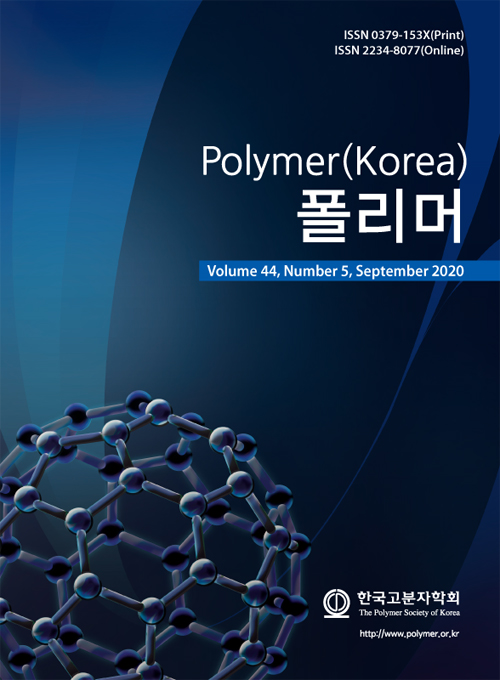- Effect of Physical Structure of Thermoplastic Polyurethane on the Supercritical CO2 Foaming
Tao Chang, Seung-Jun Lee*, Yong Hwan Yoo*, Kyu-Hwan Park*, and Ho-Jong Kang†

Department of Polymer Science and Engineering, Dankook University, Gyeonggi-do 16890, Korea
*HDC HyundaiEP R&D Center, 603 Graduate School Dong, Dankook Univ., #152 Jukjeon-ro Suji-gu, Yongin-si, Gyeonggi-do 16890, Korea- 열가소성 폴리우레탄의 거시 구조가 초임계 이산화탄소 발포에 미치는 영향
단국대학교 고분자공학과, *HDC 현대 EP
The effect of macroscopic
structures such as pellet size, shape, and orientation on the structure
development in the formation of a thermoplastic polyurethane (TPU) foam by
supercritical CO2 foaming was studied. If the same amount of
supercritical CO2 diffused into the polymer, it was found that
pellets having a relatively large volume and surface area show the decreasing
of cell density and increasing of cell size, consequently, an increase in the
expansion ratio of foaming was obtained. The chain orientation resulted in the
increase in cell density and decrease in cell size, thereby the foam expansion
ratio was reduced. This was understood that the chain orientation might prevent
the diffusion of supercritical CO2 and promotes nucleation at the
same time.
펠렛 크기와 모양 그리고 배향과 같은 거시 구조가 초임계
이산화탄소 발포에 의한 열가소성 폴리우레탄(TPU) 발포체 구조 형성에 미치는 영향을 살펴보았다. 초임계 이산화탄소 동일한 양이 고분자로 확산되면 상대적으로 체적과 표면적이 큰 펠렛의 경우, 셀 밀도를 감소시키고 셀 크기를 증가시켜 그 결과, 발포 팽창비가
증가함을 알 수 있었다. 연신에 의한 사슬 배향은 초임계 이산화탄소의 확산을 방해하며 동시에 기핵 형성을
촉진하여 셀 밀도 증가와 셀 크기 감소를 초래하여 발포 팽창비가 감소됨을 확인하였다.
Keywords: supercritical CO2 forming, thermoplastic polyurethane, foam structure, orientation
- Polymer(Korea) 폴리머
- Frequency : Bimonthly(odd)
ISSN 0379-153X(Print)
ISSN 2234-8077(Online)
Abbr. Polym. Korea - 2023 Impact Factor : 0.4
- Indexed in SCIE
 This Article
This Article
-
2020; 44(5): 658-663
Published online Sep 25, 2020
- 10.7317/pk.2020.44.5.658
- Received on Apr 20, 2020
- Revised on Jun 4, 2020
- Accepted on Jun 11, 2020
 Correspondence to
Correspondence to
- Ho-Jong Kang
-
Department of Polymer Science and Engineering, Dankook University, Gyeonggi-do 16890, Korea
- E-mail: hjkang@dankook.ac.kr









 Copyright(c) The Polymer Society of Korea. All right reserved.
Copyright(c) The Polymer Society of Korea. All right reserved.